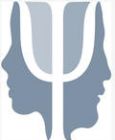Motivation
Schools Can’t Seem to Get Tech Right
The technology train has fallen well off the rails in education.
Posted January 9, 2017
Post by Dr. Kausalai (Kay) Wijekumar, a Professor of Teaching, Learning and Culture and Director for the Center for Urban School Partnerships (CUSP) at Texas A&M University. Dr. Wijekumar is a passionate advocate for improving learning for all children and combines her expertise in Computer Science, Instructional Technology, and Arts to try and make a positive impact. More information about her research may be found at www.literacy.io
Computers in our society have become so integral to our day-to-day functioning that most people do not know how to live without an electronic device. The technology developers also promote this dependence with an endless array of new gadgets and gimmicks to keep customers bound to the never ending cycle of technology-based commercialism. Every week there is an upgrade to the operating system, software, and/or the devices.
Schools and teachers are the recipients of a similar pattern of technology dependence at high human and monetary costs. Billions of dollars have been invested in infrastructures, technologies, and professional development to use the tools with great expectations for learning outcomes (Wijekumar, Meyer & Lei, 2013). As educational psychologists, we pose the question: does increased technology use in school improve student motivation and learning?
Unfortunately, the return on investment has been limited and sporadic (Cheung & Slavin, 2011). In fact, when a school invests in purchasing new software (e.g., course management system, instructional software), the fanfare that accompanies the rollout is intense. By the time the results start rolling in and Johnny still cannot read, and the overall school assessments have not budged from the same number year after year, the hype about the innovation is all but forgotten. In its wake lie “stories” of success, wherein one or two anecdotes about children are presented as evidence returns. The interactive white-board has become the most expensive chalk board in the history of the classroom or worse, a means to bully children with their benchmark scores!
One goal of educational psychology is to build understanding about how teaching and learning can be improved through new technologies. We sought answers to the puzzling questions about why schools continue to invest large amounts of money and fail to achieve success using data collected during five recent research studies. During the implementation of technology-focused research studies we have gathered data about the schools’ technology investments, successes and failures, and observed important aspects of the technology diffusion in schools. About 80 schools spanning a broad geographic region (over 10 states) have participated in our research studies and represent rural, suburban, and urban settings as well as serving children from high, medium, or low socio-economic spectrums (Wijekumar, et al., 2014; Wijekumar, Meyer & Lei, 2016). Approximately half of the participating schools were located in high-poverty areas. Our findings are eye openers to the causes of the problems.
The digital divide is alive and thriving
Children in high socioeconomic level schools participating in our research studies had excellent technology resources that were maintained and continuously upgraded. In contrast, children in schools serving high poverty neighborhoods experience many difficulties stemming from a lack of sustained funding and/or support to upgrade the computers and/or networks and bandwidth. This was most evident when the research team would observe computer laboratories with working computers and high bandwidth networks in some schools. In contrast, in high-poverty classroom settings the computer laboratories had aging computers with many computers lacking a headphone jack and/or broken keyboards. The computer support teams were poorly staffed and calls to repair or update the software were often ignored. Our research teams frequently noted that the computers were rarely used due to all the challenges. Overall the disparity in availability, usability, and use of the computer resources were stark.
The teacher knowledge divide is amplified with technologies
The role of teachers in a technology-focused learning environment poses opportunities and challenges to promoting student learning. Teachers with a deep understanding of instructional uses of technologies are able to provide powerful learning to students using computers as mind tools (Jonassen, 2000). That is, these teachers used technology as tools to promote critical thinking while researching online; they also promoted analysis skills when using spreadsheets or databases. In contrast, over 95% of our observations in technology-infused classrooms show teachers using computer time as their planning or grading time, frequently ignoring what was happening on the computers as their students worked with the computerized instruction (Wijekumar, Meyer & Lei, 2013). Teacher professional development about the computer tools did not build capacity to use the tools effectively; instead it served as “training” to know how and when to click on the tasks and reports. In many instances the teachers were distracted by the breakdown of the tools or simple use of the tools and forgot about the learning outcomes. A key question moving forward is how can we effectively support teachers in using technology to improve student learning?
Mystifying focus on motivation as an end
Another troubling scenario across all our observations in classrooms was that administrators report that students are engaged and entertained and thus, must be learning. Many teachers have become wary of the gimmicks and see themselves as losing instructional time to computers and receiving admonishment when the scores do not show improvement. Unfortunately, decisions to purchase technologies are rarely in the hands of teachers, resulting in more investments in technologies which disregard learning outcomes.
Motivation explains the reasons behind behavior, but is only a means to an end. Educational psychology research shows that increases in motivation must lead to increases in learning. If technology diffusion focuses only on motivation and lacks depth of learning then all that is left is technology hype with leaping lizards, flying frogs, and a child who is over stimulated by the computer and is always seeking those thrills. Einstein and Newton were cerebral problem solvers who relied on quiet reflection and painfully slow and steady research to solve problems. Neither scientist was reliant on short-term thrills as a means to solve monumental problems. Solely encouraging a technology focused thrill-seeking mentality in classrooms will feed the voracious commercial appetite of technology developers but may not create problem solvers.
Matching technology to learning objectives and learner needs
As educational psychologists, we want to match the best tool to learning objectives to ensure success in promoting learning and motivation. In a recent conference on child development, a technology group presented an iPad tool for children under the age of 5 to learn how to stack blocks. The goal, they said, was to make an app that looked realistic in 3 dimensions on an iPad. Human beings (and children especially) need tactile interactions with their environment. Whatever happened to giving a child real blocks and giving them the real experience building with blocks? Or the thrill of tipping the blocks over? Matching the learning objectives and needs of children to the appropriate tools is likely to produce stronger learning outcomes. In this scenario, not all tools need to be computer based.
Putting the technology train back on track
Schools need to focus on long-term plans that are guided by student needs and not what technology developers are selling each week. Note that expertise in using any tool takes time to develop (Ericsson, Charness, Feltovich, & Hoffman, 2006) and schools must allocate sufficient time to develop expertise. Schools budgeting for computers MUST plan on the necessary support and annual investments in upgrades. Schools must also allocate the necessary trained personnel to manage their technology infrastructures wisely.
In-service and pre-service teachers need to gain a deep understanding of how computers can be used effectively as a learning tool. They must be shown how a simple spreadsheet can be misused as a calculator or can be used in higher-order thinking as a hypothesis testing tool. Drill and practice may be appropriate for some learning activities, but the concept of computers as a mind tool that focuses attention to higher-order thinking tasks such as analysis, critical thinking, and hypothesis testing should be the focus of the learning environment. Learning to use the tool (e.g., knowing where and how to input an equation) is a prerequisite skill and not the ultimate goal.
When making technology selections, administrators need to focus heavily on learning outcomes. Conducting a needs assessment about the types of skills that children should be learning prior to reviewing technologies may keep the “sales” discussion grounded on what is important. Identifying learning objectives and learner needs also allows decision-makers to weigh the pros and cons or the need for the technologies. Utilizing resources, such as the What Works Clearinghouse, presents a sound starting point for evaluating the efficacy or effectiveness of any solutions.
The challenges and opportunities posed in this blog highlight the need for educational psychologists and other educational stakeholders to think deeply and strategically about ways technology can be effectively utilized in school to improve student motivation and learning.
This post is part of a special series curated by APA Division 15 President Bonnie J.F. Meyer. The series, centered around her presidential theme of "Welcoming and Advancing Research in Educational Psychology: Impacting Learners, Teachers, and Schools," is designed to spread the dissemination and impact of meaningful educational psychology research. Those interested can learn more about this theme in Division 15's 2016 Summer Newsletter.
References
Cheung, A. C., & Slavin, R. E. (2011). The effectiveness of education technology for enhancing reading achievement: A meta-analysis Center for Research and Reform in Education. , 200 West Towsontown Boulevard, Baltimore, MD 21204. Retrieved from http://ezaccess.libraries.psu.edu/login?url=http://search.proquest.com…
Ericsson, K. A., Charness, N., Hoffman, R.R., & Feltovich, P.J. (2006). The Cambridge handbook of expertise and expert performance. Cambridge;New York;: Cambridge University Press.
Jonassen, D. H. (2000). Computers as mindtools for schools: Engaging critical thinking (2nd ed.). Upper Saddle River, N.J: Merrill.
Wijekumar, K., Meyer, B.J.F., Lei, P.-W. (2013). High-fidelity implementation of web-based intelligent tutoring system improves fourth and fifth graders content area reading comprehension. Computers & Education, 68, 366-379.
Wijekumar, K., Meyer, B.J.F., Lei, P.-W, Lin, Y., Johnson, L.A., Shurmatz, K., Spielvogel, J., Ray,M, & Cook, M. (2014). Improving reading comprehension for 5th grade readers in rural and suburban schools using web-based intelligent tutoring systems. Journal of Research in Educational Effectiveness, 7:4, 331-357, DOI: 10.1080/19345747.2013.853333
Wijekumar, K., Meyer, B.J.F., & Lei, P-W (2016). Improving content area reading comprehension with 4-6th grade Spanish Ells using web-based structure strategy instruction. In J.Michael Spector, Dirk Ifenthaler, Demetrios G. Sampson, and Pedro Isaias (Eds). Competencies in Teaching, Learning and Educational Leadership in the Digital Age: Papers from CELDA 2014, Springer.




